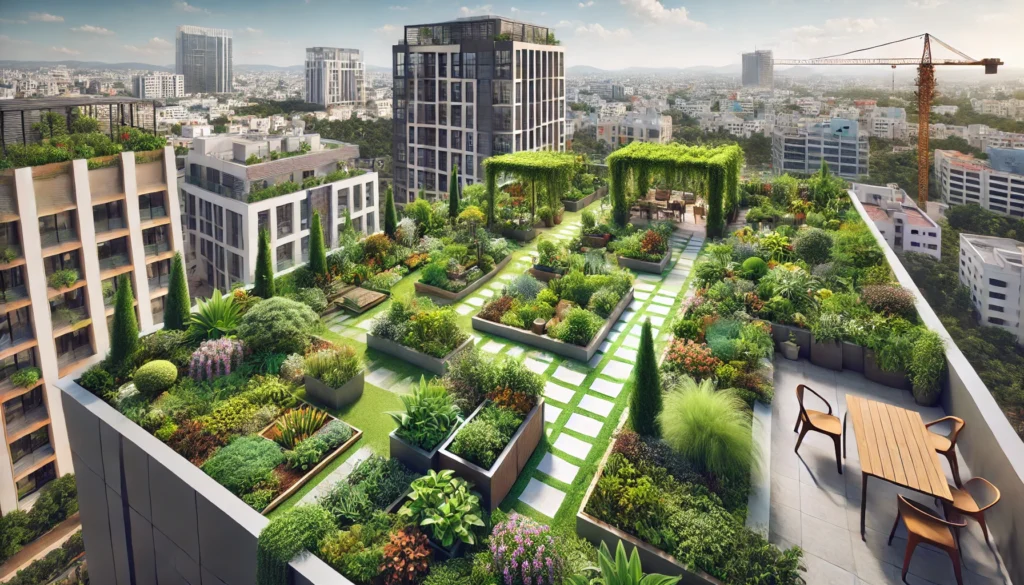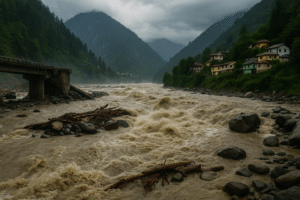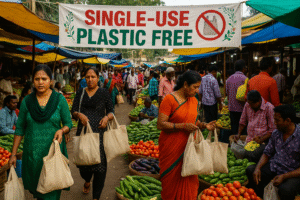Imagine walking through a busy city street on a scorching summer day. The heat is overwhelming, and it feels like an oven outside. If you live in a big city, you might have experienced this intense heat, often worse in urban areas than in the countryside. This phenomenon is known as an Urban Heat Island (UHI).
What is an Urban Heat Island?
An Urban Heat Island occurs when a city experiences much warmer temperatures than its surrounding rural areas. This is due to human activities, dense infrastructure, and limited greenery. Buildings, roads, and other city surfaces absorb and retain heat, creating “hot spots.” These hot spots can make living conditions uncomfortable and even dangerous during heat waves.
Why Are Urban Heat Islands a Problem?
The higher temperatures in cities lead to several issues:
Health Risks: Extreme heat can cause heat strokes, dehydration, and other heat-related illnesses.
Increased Energy Consumption: To cool down homes and buildings, people use more air conditioning, which leads to higher electricity consumption and bills.
Air Pollution: Higher temperatures can increase the concentration of pollutants, worsening air quality.
Water Stress: More heat means more evaporation and increased water demand, which stresses water resources.

Urban Heat Islands in India
India, with its rapidly growing urban population, faces significant UHI challenges. Cities like Delhi, Mumbai, Chennai, and Kolkata are especially prone to UHI effects due to their dense population and infrastructure. The high temperatures and humidity in these cities can make summers particularly unbearable.
How Can We Mitigate Urban Heat Islands?
Increase Greenery: Planting more trees and creating green spaces can significantly reduce temperatures. Trees provide shade and release moisture into the air, cooling the surroundings.
-
- Example: The Miyawaki forest technique, which involves planting dense, native forests, has been successfully implemented in several Indian cities. These mini-forests multiply and help in cooling urban areas.
Green Roofs and Walls: Installing green roofs (roofs covered with vegetation) and green walls (walls covered with climbing plants) can help insulate buildings and reduce the heat they absorb.
-
- Example: In Bengaluru, some commercial buildings have adopted green roofs, which help reduce the need for air conditioning.
Cool Roofs: Using reflective materials for roofs can help reflect more sunlight and absorb less heat. This simple change can make a significant difference in building temperatures.
-
- Example: The Cool Roofs Initiative in Hyderabad encourages residents to paint their roofs with reflective paint, helping to reduce indoor temperatures.
Urban Planning: Better urban planning can help mitigate UHI effects. This includes designing cities with more open spaces, parks, and water bodies that can help cool the environment.
-
- Example: The Smart Cities Mission in India aims to develop sustainable and inclusive cities, focusing on improved urban planning and infrastructure.
Water Features: Incorporating water bodies like fountains, ponds, and lakes in urban areas can help cool the air through evaporation.
-
- Example: The Sursagar Lake in Vadodara is an excellent example of how water bodies can help cool urban areas.
Public Awareness: Educating the public about UHI and encouraging community involvement in green initiatives can foster a collective effort to cool down cities.
-
- Example: Awareness campaigns by non-profit organizations like CSE (Centre for Science and Environment) highlight the importance of urban greenery and sustainable practices.
Practical Steps for Individuals
While large-scale initiatives are essential, individuals can also contribute to mitigating UHI:
Plant Trees and Shrubs: Even small green patches in backyards or balconies can help.
Use Reflective Paint: Paint roofs with reflective paint to reduce heat absorption.
Install Shade Devices: Use awnings, blinds, or shades to block direct sunlight on windows.
Choose Green Transportation: Reduce heat from vehicles by using public transport, cycling, or walking.
Conclusion
Mitigating urban heat islands is crucial for making our cities more livable as temperatures increase due to climate change. By increasing greenery, using excellent materials, and planning better urban spaces, we can cool down our cities and improve the quality of life for urban dwellers. Individuals, communities, and the government’s efforts are essential in this battle against the heat.
Together, we can transform our cities into more relaxed, greener, and sustainable spaces for everyone.
Author’s Note
Thank you for reading! This blog helps you understand Urban Heat Islands and how we can combat them. Let’s work together to make our cities more comfortable and sustainable. If you have any questions or suggestions, feel free to comment below.
G.C., Ecosociosphere contributor.
References and Further Reading
- Centre for Science and Environment – Urban Heat Islands
- Smart Cities Mission, Government of India
- Diksha, .., Kumari, M., Kumar, P., & Kumar, D. (2023). A Geographically Weighted Regression analysis of the underlying factors of Urban Heat Island phenomenon in Ghaziabad district of Uttar Pradesh. Research Square (Research Square). https://doi.org/10.21203/rs.3.rs-3365137/v1
- Outreach – uLwazi – SAEON. https://ulwazi.saeon.ac.za/outreach/
- How can urban design and architecture foster active lifestyles and mitigate the effects of urban heat islands? – arnabontemps. https://arnabontemps.org/archives/751
- The Comprehensive Guide to Roof Replacement: Everything You Need to Know | John Hogan Roofing Company. https://johnhoganroofing.com/guide-to-roof-replacement/
- Get Outside in The Middle of The Day & Take Vitamin D | Pleasure Coach Vireo. https://pleasurecoachvireo.ca/get-outside-in-the-middle-of-the-day-take-vitamin-d/




